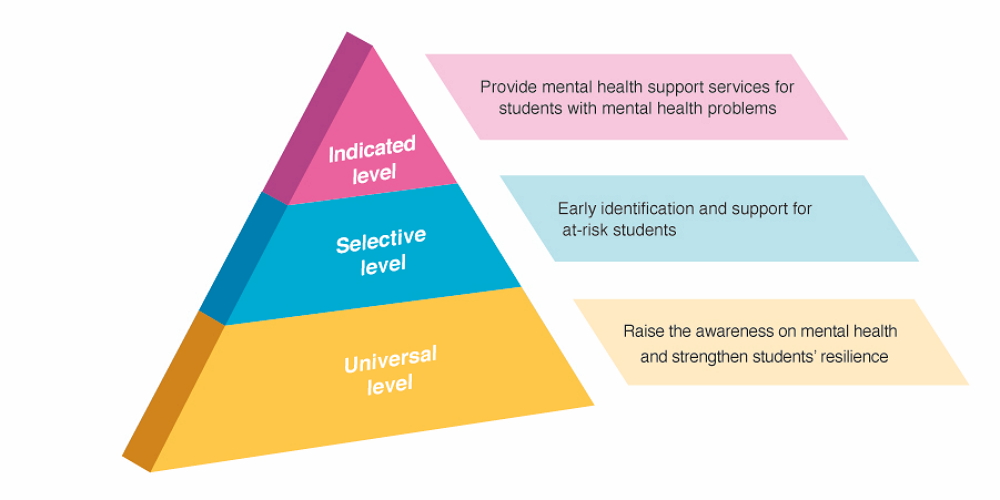Introduction
What is mental illness (MI)?
MI is a health condition. The symptoms displayed by students with MI involves abnormal cognition, thinking, emotion, perception, behaviour or physical functioning. MI will affect students’ various aspects of life, including learning, social or work performance. There are different types of MI. Those commonly seen in children and adolescents include anxiety disorders, depressive disorders and obsessive compulsive disorder. Among them, there are more severe types, such as psychotic disorders and bipolar affective disorder, and the symptoms are more persistent and may generate wider impact. Other types of MI include oppositional defiant disorder, Tourette syndrome and eating disorders.
If I suspect that my child might have MI, I should...
…initiate contact with the Special Educational Needs Coordinator (SENCO), class teacher, the school guidance team or school social worker. The school can then arrange appropriate support services for my child.
After my child is diagnosed to have MI, I should…
…provide the school with the related information of my child promptly and proactively, including forwarding his/her psychiatric report to the school for arrangement of appropriate support services. I should also communicate with the School Guidance Team or school social worker, SENCO, Student Support Team, class teacher and subject teachers to understand my child’s learning and adaptation condition; and jointly discuss appropriate support strategies if necessary.
How do schools adopt the Whole School Approach to support students with mental health needs?
The Education Bureau (EDB) has been encouraging schools to adopt the Whole School Approach directed at three levels, namely Universal, Selective and Indicated, to promote mental health amongst students and enhance support for students with mental health needs. At the Universal level, schools should raise awareness on mental health, enhance mental health literacy among students, teachers and parents, and strengthen students' resilience and mental health. Schools should also reduce the stigma associated with help-seeking behaviours. At the Selective level, schools should put emphasis on enhancing identification of, and support for, at-risk students. At the Indicated level, schools should ensure students with mental health problems (including those with MI) could receive timely and appropriate mental health support services.

More relevant information:
